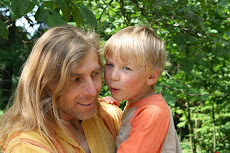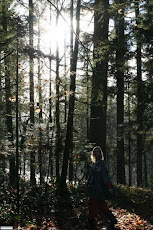
As we process the post-hockey violence in Vancouver, I feel called to share this piece I published a few years back. When it happened, I somehow thought that mob mentality was a "third-world" phenomenon, but we're all human and we all get swept away and we all have the frightening potential to lose our humanity. Even over a stupid hockey game.
Thirteen years later, I can still see him lying there on the sidewalk. Still smell the urine and sweat and anger, still taste my revulsion and fear and excitement. Justice swiftly served on the hot streets of Tanzania.
I had been walking down the streets of Dar Es Salaam – which means “Harbour of Peace” –when I noticed a crowd gathered on the sidewalk. Not the normal gang hanging around a gambling card game or street performer or moneychanger. This crowd was buzzing, pulsing, hungry. There was a smell of violence, of men strongly elated and horrified by what they had become.
The crowd readily parted to let me see the cause, or result, of the gathering. A man on his back, bloody, wet urine stain down the front and leg. At first I thought he was passed out drunk, but as a few stragglers kicked idly into his inert sides so as to not feel left out, it was obvious he was dead.
This wasn’t my first experience of street justice. When a hungry barefoot boy lifted my pocketknife in a crowded ferry landing in Zaire, the local men caught and beat him. The first thing I knew of it was the sound of knuckles rapping hard, repeatedly, on the boy’s skull, and the wails of a small wounded animal with no escape. Even when I realized that the beating was on my behalf – especially then – I wanted desperately for it to stop. It was only a knife; he was only a small hungry boy.
But when a young man reached into my friend’s money belt on a bus in Uganda, I was no pacifist – I was angry. He only got his hands on Evie’s leftover sandwich, but I wanted him to be Punished. Instead, he just got off the bus and laughed at us through the window, mocking my impotent rage. Where was the Clint Eastwood Man in me teaching him a lesson? Where were the protective locals hammering a message of justice in loud resonating cracks to his skull? I could have easily joined a mob and laid my boots to his side until pain smudged that cocky smile.
Perhaps he would have “learned his lesson” and not robbed anyone ever again. Perhaps he would have still been hungry and desperate, and a bit more dangerous. Or perhaps he too would have ended up on his back in the street, lying in a pool of his own blood, a few more random kicks to make sure the job was done.
I did not want to kill him. But I did want to hurt him, or see him hurt, to assuage my anger. And behind that anger was fear – fear that this crime could happen again, to me. That scared boy in me needed to believe in the simple societal answer that punishing him would protect me. And from that place of fear, punishment would have to be violent, somehow making him suffer – a beating in Africa, incarceration in Canada, capital punishment in Texas.
That violent rage and fear I experienced is the same energy that fed the mob in Dar Es Salaam. It blocked the humanity in them that could have felt compassion or connection with him as a human being – the part that could move beyond the need for Punishment and embrace something like Restorative Justice. It also blocked the rationality and restraint in them that could have stopped it in time. The result was death rather than justice.
As the anger drug wore off the “Harbour of Peace” mob, the self-appointed street judges believed – had to believe – that they’d done the right thing. That he deserved what he got, and that this would send a message to other would-be thieves. Having arrived too late to catch the mob mentality and not being the victim, I had the luxury of condemning the violence and the curse of fully absorbing the horror. And at that moment I had the hypocrisy to judge those men for feeling and doing exactly what I felt and might have done to a young man in Uganda, for the crime of almost stealing my friend’s leftover sandwich.






If you get enough men aged 15-30 together and add some anger there is always the danger of mob mentality. It drives the purely destructive, the G20/Battle in Seattle and things like the 3rd world vigilantes you encountered.
ReplyDeleteThe crowd builds up its own energy and mood and those that might be able to stop it keep their mouths shut for their own safety.
Any man over the age of 40 should be able to admit that in his late teens and early 20s they were not in as rational control of themselves as they are now. Most will have nothing more than drink way more than they should have, but many will have done something really stupid on a dare or when they felt they could not be caught.
There is something in the very nature of young men that drives this. For many millenia communities needed fit, strong young men to protect the community - men that needed to believe they could do anything and beat anyone they had to.
I am reminded of a quote from the first episode of Gwynne Dyer's TV series - this is a paraphrase "Give me a man at age 18 and I can make him love to kill. Give me a man age 28 and I can make him a soldier but he will never enjoy killing."
Here is bit of my take on what was going on:
http://illahie.blogspot.com/2011/06/fan-is-shortening-of-fanatic.html